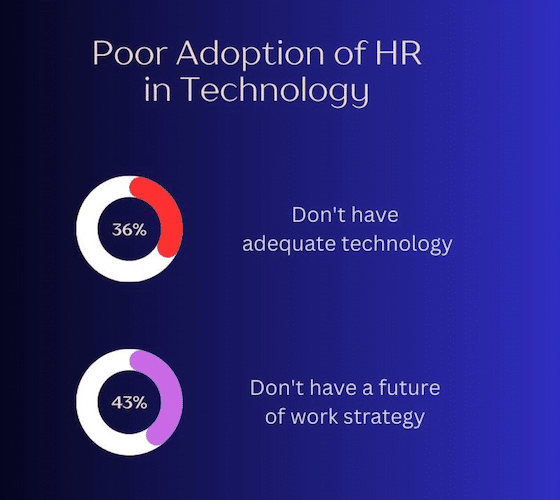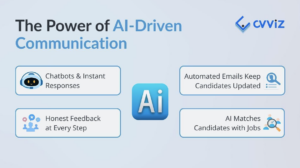With the rise of hybrid and work-from-home arrangements, along with worker shortages resulting from the Great Resignation, to say that workplaces are changing is somewhat of an understatement. Businesses have been forced to adapt, and that means they’re turning to their HR departments to manage unprecedented levels of change.
Human resources has always been a key department in any business, especially in times of change. If your HR department is not meeting the current needs of the organization and its workforce, your business will suffer the consequences. How can you ensure your HR department is ready for the future?
How HR Has Evolved Over the Years
Traditionally, the HR department was somewhat isolated from the rest of the organization, and it communicated with other departments via emails and internal communication. A typical human resources department would take care of regulatory compliance, onboarding and termination paperwork, payroll, and staff management. This siloed model often meant that the HR department was left out of strategic decisions.
Over the years, HR has witnessed a significant evolution from a primarily administrative role to a strategic and people-centric function. Today, HR managers shape company culture, create initiatives that foster employee engagement, and drive organizational success. HR departments are strategic partners and work to align HR strategies with the company’s goals.
The digital revolution brought automation and data analytics to HR management, simplifying tasks, saving time, and allowing HR to make data-driven decisions. 58% of organizations now depend on HR technology solutions for talent recruitment and retention. HR teams can now also handle employee wellness programs, talent development, diversity, and inclusion initiatives.
Why HR Departments Can not Afford to Fall Behind
Workplaces have become more complex with the growth of hybrid and remote work models. The demands of today require redefined HR standards to meet the needs and expectations of the workforce.
The effectiveness of your human resources strategy can have a direct impact on your bottom line. By establishing a strategy, you set a baseline that lets you anticipate the demand for staff, so management can make data-driven decisions and handle staff changes better.
According to PwC’s 2022 HR and Tech Survey, the modernization of HR systems is one of the top ten HR challenges today.

5 Ways to Future-Proof Your HR Department
Here are five ways you can future-proof your HR department:
1. Work With HR Tools and Technologies
A dedicated HR software application is one of the most helpful tools for streamlining workflows, finding talent, and measuring employee performance. The vast majority of organizations (80%) use some kind of HR software, regardless of company size.
The digital transformation of HR processes is not that smooth. Even when it comes to HR technology solutions, 36% of HR professionals say the technology they have doesn’t meet their needs.

One of the benefits of automation is being able to work digitally—many HR departments are using technology to go paperless and automate HR processes to save time and money. Streamlined workflows prevent human error and speed up otherwise time-consuming HR tasks. However, many organizations have been slow to adopt technology to solve HR challenges.
Gina O’Reilly, COO at Nitro Software, explained to Silicon UK:
“Our hope is that businesses can work 100% digitally at some point, but we know that change won’t happen overnight. The biggest challenges we see when organizations make a move to digital solutions are IT buy-in, training, and cost. In fact, our most recent report shows the top barriers as IT being too busy (42%), limited budgets (41%), and a lack of training and support (38%).
2. Revamp Your Hiring Process
One of the main tasks for HR departments is hiring new employees, and this is one of the processes that have the most impact on the company’s bottom line. Old cookie-cutter hiring practices are ineffective for attracting talent today, as qualified candidates come from diverse backgrounds and experiences.
Revamping your hiring process can ensure you attract the right people to your company. Consider the following to future-proof your HR department’s hiring practices:
- Focus on potential versus experience. Traditional hiring practices focus on the candidate’s experience and fail to consider skills that are more critical today, such as the ability to adapt to change. Modern HR teams should focus on candidates who demonstrate agility, a willingness to learn new skills, and a growth mindset.
- Reassess work requirements. New roles and technologies mean job requirements are also evolving. Consider and redefine the skills required to meet the demands of your industry and the essential skills a potential candidate needs to thrive in the role and align your job descriptions to them.
3. Cultivate Passive Candidates
A passive candidate is an individual who is not actively seeking new job opportunities but may be open to changing roles. Targeting passive candidates can expand your talent pool so you have more chances to find the right professional. Consider the following strategies to attract passive candidates:
- Invest in networking. Building relationships can connect you to potential candidates. Use social media platforms, networking events, and industry conferences to develop your employer brand and establish a talent pipeline for current and future openings.
- Leverage technology: Recruitment tools and platforms can help you identify and engage with passive candidates. AI-powered sourcing tools can help you discover and connect with candidates.
4. Focus More on Employee Development
If you want to future-proof your HR department, look inward. Invest in a talent development track for current employees, upskilling your workforce so they can adapt to the growing needs of your industry. The following approaches can help:
- Give your employees a personalized career development plan. Create an individualized plan, taking into account the employee’s strengths and expectations. Tailor the plan to help them meet their goals by helping them acquire the necessary skills. Implementing advanced performance management systems can facilitate rapport by simplifying feedback, coaching, and achievement recognition processes.
- Create a continuous learning environment. Provide opportunities for professional development that encourage your employees to learn, such as training programs, workshops, and mentorship. Create a company culture that fosters learning, adaptability, self-improvement, and curiosity.
5. Perform Gap Analyses Consistently
Gap analysis is a workforce planning process where HR managers assess their employees’ skills and competencies and compare them to the skills the organization requires to meet its goals. A well-executed gap analysis can identify where the organization should strengthen the workforce’s skills and inform hiring or upskilling practices. Consider the following steps:
- Evaluate current skills. Assess your workforce’s current skills and identify where they need to improve and upgrade. In some cases, the gap will show where you need to hire new personnel. If so:
- Assess job descriptions. When you’re hiring, ensure that the job descriptions accurately describe the opening in terms of skills, requirements, and expectations.
- Review the employee handbook. How long has it been since the last time an HR professional reviewed the handbook? Check if your policies align with compliance regulations and legal requirements. Ask your employees for feedback on the handbook.
- Evaluate the effectiveness of training programs. Review how the talent development program at your organization is working. Ask your employees for insights and ideas for improvement.
- Identify skill requirements. Look at your industry’s trends and anticipate which skill will be needed to compete.
Adaptability and Technology Are the Keys to the Future of HR
Future-proofing your HR department is a matter of embracing change. By improving the hiring processes, expanding your talent pool, and emphasizing internal mobility and employee development, your HR department is well-equipped to face ever-changing business challenges.



